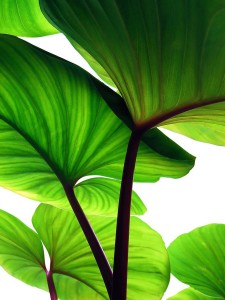Using Green Roofs for LEED in Residential Properties
Oct 7th, 2010 | By Dave Hilary | Category: Environmental Management
Leadership in Energy and Environmental Design (LEED) is an initiative of the U.S. Green Building Council (USGBC) to certify “a building or community was designed and built using strategies aimed at improving performance across all the metrics that matter most: energy savings, water efficiency, carbon dioxide emissions reduction, improved indoor environmental quality, and stewardship of resources and sensitivity to their impacts.” Green roofs are recognized under LEED in a number of credit categories.
LEED Points for Residential Green Roofs
Examples of LEED points that can be earned for residential green roofs include the following:
- One-half point for installing a vegetated roof over 50 percent of the home, with another point for installing storm water controls to manage the roof’s runoff.
- One point for installing a green roof over the entire home, with another point when a certified landscape designer or engineer designs an on-site element to handle all of the home’s runoff.
These credits are under Surface Water Management (SS 4.3).
If a green roof improves the overall energy performance of the home, it may also be eligible for credits under Optimize Energy Performance (EA 1). The points awarded in this case are based on the Home Energy Standards Index that a residence achieves when all of the factors that increase energy efficiency are added up.
Commercial, Institutional and High-Rise Buildings
LEED for New Construction and Major Renovationsfocuses on certification for commercial, institutional and high-rise residential buildings. There are several areas where green roofs add credits under this certification program. In Sustainable Sites, green roofs get points for reducing storm water runoff and may also be considered water treatment devices by virtue of the filtration provided through the growing-medium. Under the same credit, points may be earned for mitigating the heat island effect (areas of dark surfaces that absorb the sun’s heat) and for maximizing open space. Other credits come into play for Water Efficiency when the green roof is designed without irrigation. Under the Energy and Atmosphere credit, green roofs earn points for reducing the building’s heating and cooling loads and making it possible to downsize heating, ventilation and air conditioning equipment. The number of points here is based on the energy reduction levels. Green roofs that improve a workplace, open up educational opportunities or create recreational space are also eligible for credits. These are under the Innovation and Design Process credit.
Manufacturers of green roof systems also highlight specific points related to their systems. In some cases the recycled content used in the products qualifies for credit, as do regional materials and rapidly renewable materials.
About the Author
Dave Hilary is a green roof enthusiast based in Washington, D.C. who runs Green Roof Plan, a web site dedicated to helping home and business owners get on the road to a beautiful, energy-saving green roof.
Photograph: Foliage by Sonny Leon, Quezon City, Metro Manila, Philippines. See more photos at http://sonnyleon.carbonmade.com.


